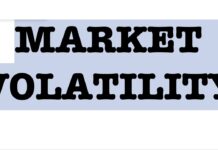March was a month of anticipated change that did not happen. And the financial markets took note, with the S&P 500 (INDEXSP:.INX) stalling out in early March.
Healthcare reform in the U.S. stalled before even reaching a vote. Markets hesitated as a tax reform proposal, hopes for which had driven stocks higher over the last few months, stagnated. Yet the Fed continues to see signs of recovery so asset prices remain elevated, only seeing a minor pullback from the early March highs.
Stocks & Bonds
The U.S. stock market traded sideways in March. The Fed raised rates as expected, which is a double-edged sword for stocks. On one hand, economic recovery should be good for corporate profits; on the other hand, higher interest rates generally mean more demand for bonds and less demand for equities. The European stock market is outperforming the U.S. year-to-date, a reversal of last year’s fortunes. Here are the numbers:
Commodities & Currencies
Oil prices lost about 6% for the month of March, as last year’s OPEC production cuts are proving to have less effect than anticipated (NYSEARCA:USO). Gold prices were largely unchanged for the month of March, but are off to a strong start in April (NYSEARCA:GLD).
The U.S. dollar lost almost 1% for the month, and is down 1.61% year-to-date. The market had priced in a more aggressive Fed schedule for 2017, and is now backing off of those expectations somewhat.
Economy
The ISM Manufacturing PMI in March came in at 57.2%, still showing healthy expansion although slightly softer than the February reading. The non-manufacturing, or services, index came in at 55.2%, again showing continued expansion, but a bit slower than in February. The Commerce Department released its third estimate of fourth quarter GDP growth, calculating an annual rate of 2.1%, an improved reading over the previous estimate of 1.9%. The National Association of Realtors reports that existing-home sales in February 2017 were 5.4% higher than in February 2016. In addition, the median price increased 7.7% to $228,400. Median home prices have now been rising for the past 5 years. Distressed sales (foreclosures and short-sales) were 7% of total sales in February, unchanged for the past 2 months but lower than the 10% rate from a year ago.
Thanks for reading.
This material was prepared by Greg Naylor, and all views within are expressly his. This information should not be construed as investment, tax or legal advice and may not be relied upon for the purpose of avoiding any Federal tax liability. This is not a solicitation or recommendation to purchase or sell any investment or insurance product or service, and should not be relied upon as such. The S&P500, MSCI EAFE and Barclays Aggregate Bond Index are indexes. It is not possible to invest directly in an index. The information is based on sources believed to be reliable, but its accuracy is not guaranteed.
Investing involves risks and investors may incur a profit or a loss. Past performance is not an indication of future results. There is no guarantee that a diversified portfolio will outperform a non-diversified portfolio in any given market environment. No investment strategy can guarantee a profit or protect against loss in periods of declining values. Listed entities are not affiliated.
Data Sources:
- www.standardandpoors.com – S&P 500 information
- www.msci.com – MSCI EAFE information
- www.barcap.com – Barclays Aggregate Bond information
- www.bloomberg.com – U.S. Dollar & commodities performance
- www.realtor.org – Housing market data
- www.bea.gov – GDP numbers
- www.bls.gov – CPI and unemployment numbers
- www.commerce.gov – Consumer spending data
- www.napm.org – PMI numbers
- www.bigcharts.com – NYMEX crude prices, gold and other commodities
Any opinions expressed herein are solely those of the author, and do not in any way represent the views or opinions of any other person or entity.









